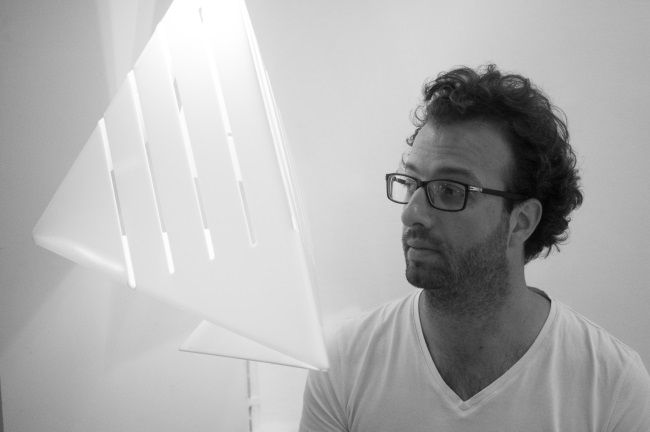In our latest Belgian design piece Jeanie Keogh visits a Liege designer’s up-cycled store.
A funky Belgian design deco store has cropped up in the centre of Brussels in the past few weeks. Open for just over a month, ReStore is so named because 70% of the materials used in the designs are up-cycled. What isn’t made from reclaimed materials is made from wood that is ethically-sourced from sustainable forests in Poland.
Working with junk, scrap and whatever else he can get his hands on, Liege designer Benjamin Pailhe is someone who enjoys being restricted by the parameters of using only what he has and likes having to adapt. A scavenger for over 20 years, one of the things he collects is sheets of plexiglass destined for the landfill, which he makes into lamps. What is left over or too small is turned into a pair of earrings, a necklace or a ring.
“A designer often thinks about something and then tries to create it, whereas we start with the material and think, ‘what am I going to do with that and what will it be for?’ I don’t draw a design and then go looking for the material and a supplier. It’s the opposite, in fact. The material always comes first, then the shape manifests. I’m an artist by training, so form comes before function. Maybe it’s bad, but it gives me more freedom.”
Some of his lamps are made out of a transparent material used by Mestdagh, the Belgian food distribution company, to furnish the backs of refrigerators. Other lamps are repurposed wooden salad bowls. His geometric animal wall hangings were once advertising signboards made of Forex.
“It’s not garbage, it’s my working materials,” he said.
Well-known for his work with would-be waste, Pailhe gets a call when companies have an overstock of something they think he could use. Or, through his relationships with disposal companies, he’s created an informal network where stuff is put aside for him.
His wooden jewelry, for example, was recuperated from the thin, soft boards used to make the backs of old wardrobes and cupboard drawers.
“If I were to make it with new material, it wouldn’t be as good because – and it makes me want to tear my hair out – it’s impossible to find currently existing material that works as well as the old.”







